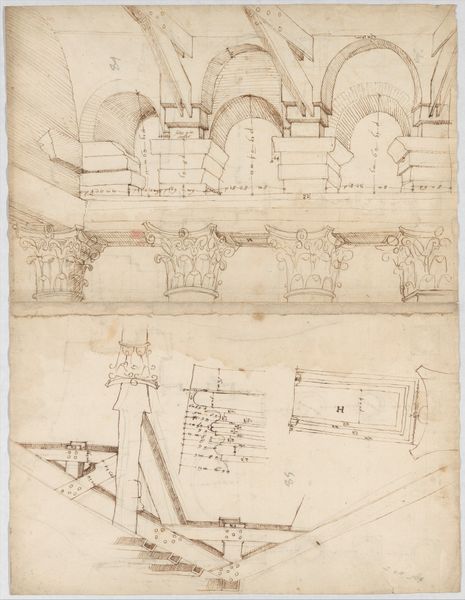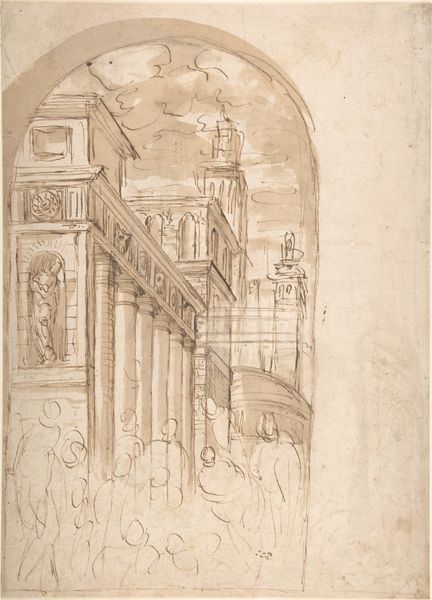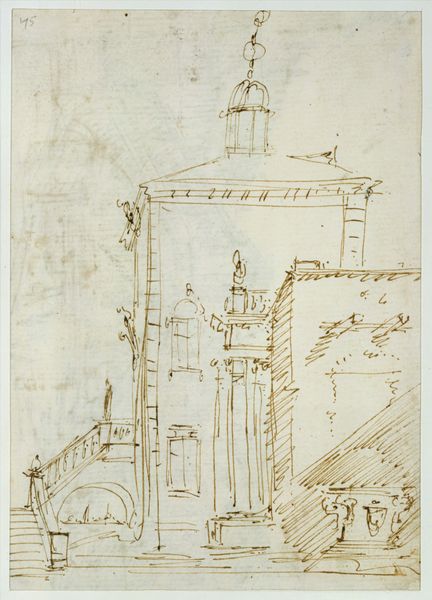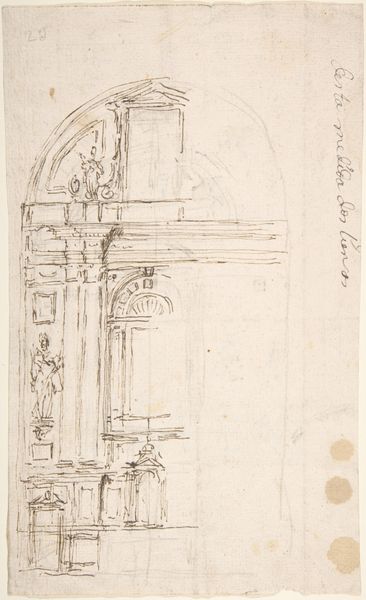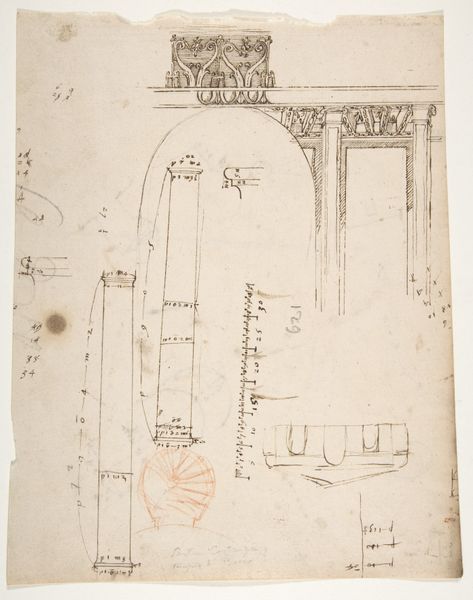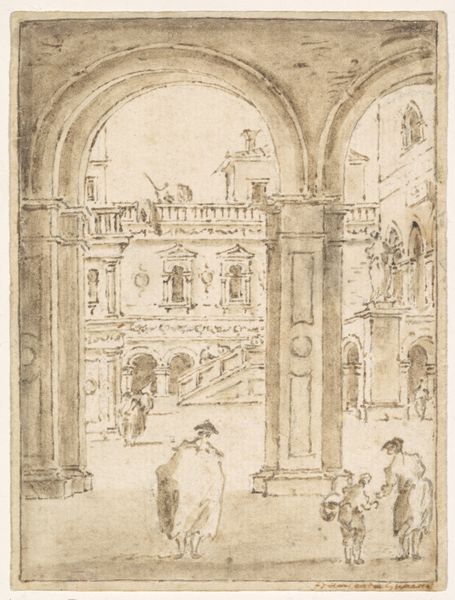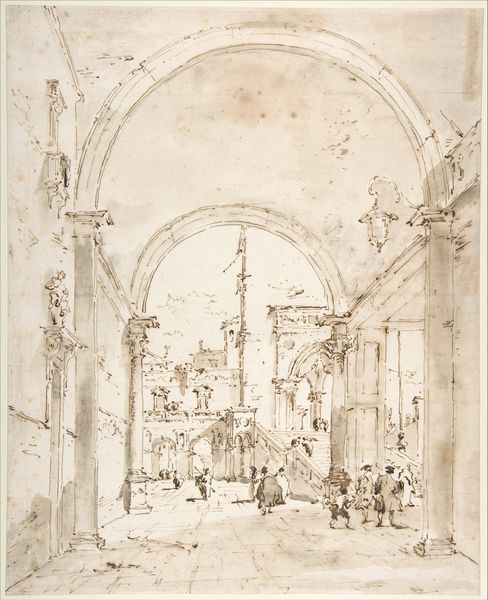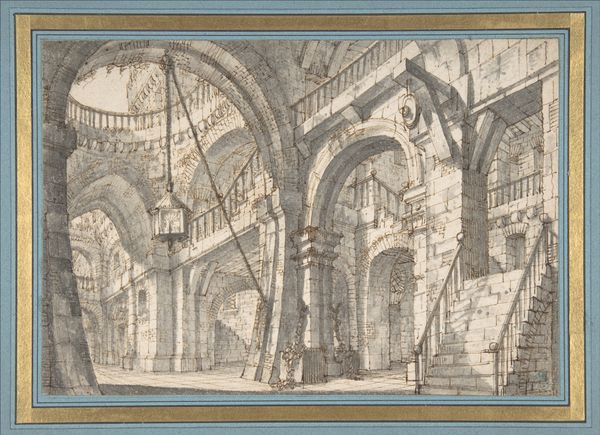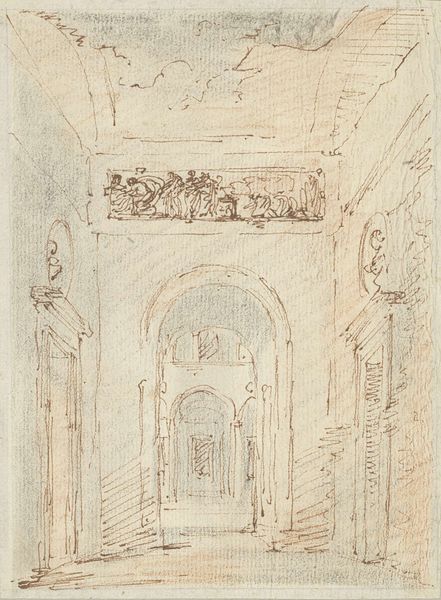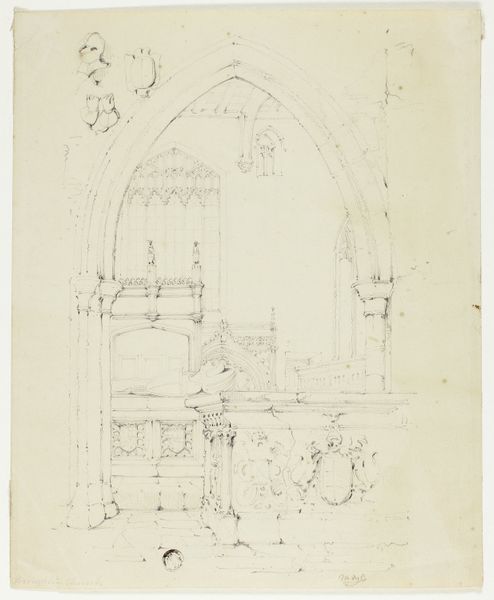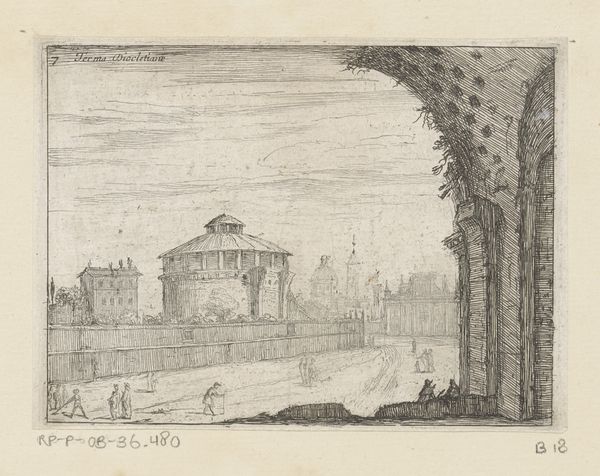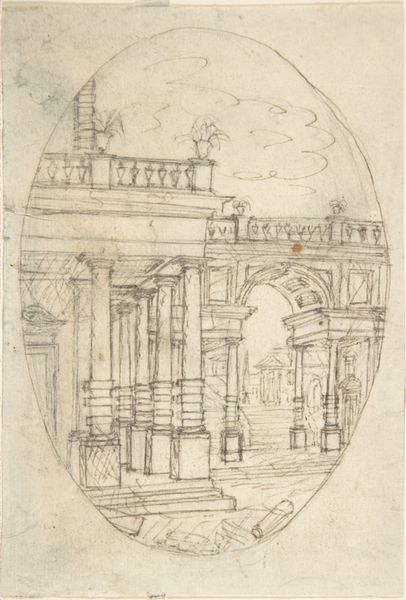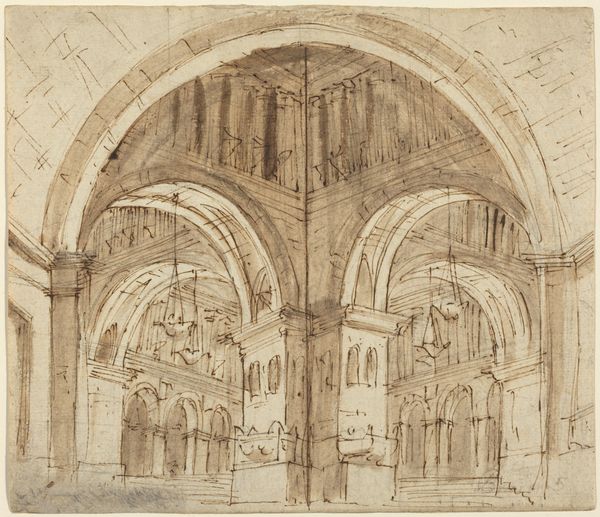
Interior of the Basilica of San Marco, Showing the Crossing and the Choir 1760 - 1771
0:00
0:00
drawing, ink
#
drawing
#
landscape
#
ink
#
geometric
#
line
#
italian-renaissance
Dimensions: 11 x 7 1/2 in. (28 x 19 cm)
Copyright: Public Domain
Curator: What we have here is Canaletto’s “Interior of the Basilica of San Marco, Showing the Crossing and the Choir,” a drawing rendered in ink, placing us right in Venice sometime between 1760 and 1771. Editor: My first impression is one of vastness, but also a curious lightness. The skeletal lines create depth, but the limited use of ink also keeps the whole space feeling surprisingly airy. Curator: Absolutely. Remember that religious institutions during this era exerted significant control, not just over spiritual life but over societal structures, political discourse, and the very fabric of daily life for the masses. Cathedrals served as imposing physical and ideological markers, central to social identity. Editor: Yet Canaletto seems more interested in the play of perspective than any kind of moral pronouncement. The linear precision used to map out the architectural structure of the Basilica strikes me as utterly captivating. Note how each line serves not just to represent but to create an unfolding visual system that dictates the viewer’s gaze. Curator: And I would add that the incompleteness of the drawing might reflect something more than mere visual play; think of the power structures inherent within such spaces. The unburdened ink hints towards some form of subversion. The work is stripped to its skeletal foundations of line and form, and the masses of people are removed from this majestic scenery; in turn we expose the artificial grandeur with which the upper class created around their existence. Editor: Perhaps. Though one could argue that the deliberate restraint highlights the power of line itself. The geometric structures of the cathedral's dome are both stable and dynamically rendered with only line and its absence. There’s a certain elegance in its economy. Curator: But beyond geometry, think of the architectural choices, the baroque curves of the arch juxtaposed against strong lines. Editor: These are undeniably aesthetic and formal qualities which reflect the stylistic milieu in which Canaletto worked and suggest the ways in which Venice's cultural identity becomes deeply entwined with a larger artistic lineage. Curator: The convergence of art, power, and place becomes incredibly relevant here when discussing the way in which identity is constructed within that specific cultural moment in time. It begs the question: which identity is being highlighted here? Editor: Well, from my perspective, Canaletto has delivered a blueprint to the building's sublime architecture; one that relies purely on structural integrity to convey not just a sense of place but of seeing in its purest form. Curator: An interesting note to end on. Editor: Agreed. Thank you.
Comments
No comments
Be the first to comment and join the conversation on the ultimate creative platform.
